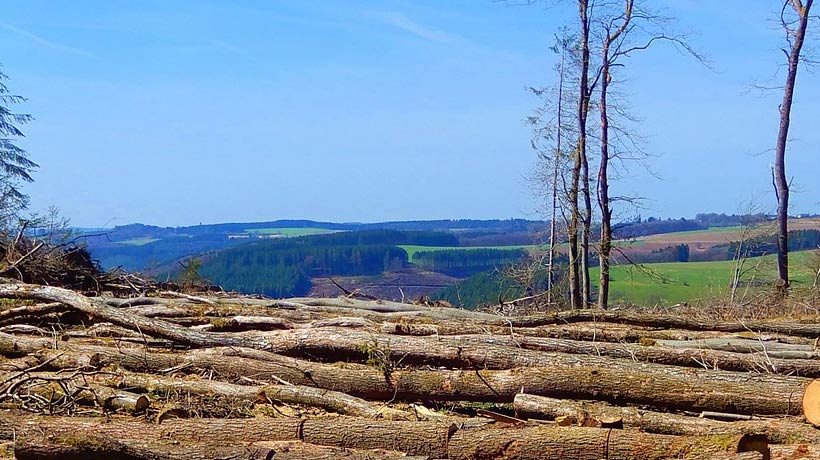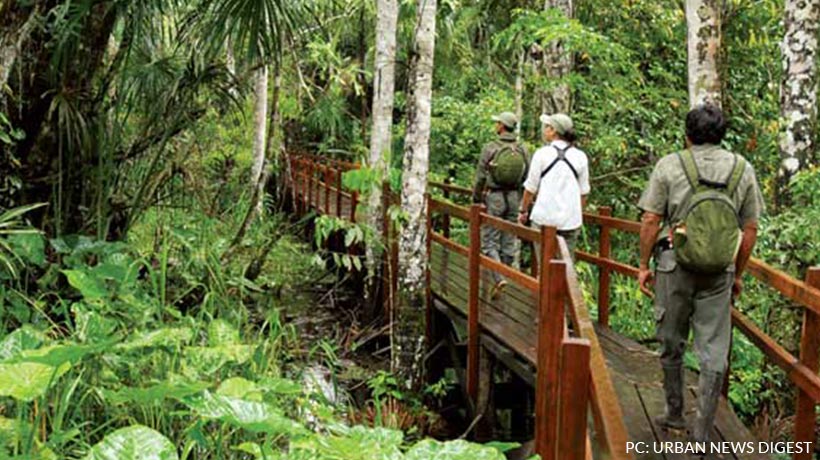As the world seeks to preserve wildlife and slow the pace of climate change, trees hold a major part of the answer. Yet the mass destruction of trees, deforestation continues, sacrificing earth. 31% percent of the earth\’s land surface is forests which house the majority of the plants and animals found on earth. Rainforest having especially high species density, covering 2 percent of the earth\’s surface, and houses nearly 50% of animal species.

These animals are an integral part of our ecosystem and as important as forests are both environmentally and economically, many of our global forests are severely affected by deforestation, it is one of the leading causes of climate changes and species extinction.
Causes of Deforestation
Farming, grazing of livestock, mining, and drilling combined account for more than half of all deforestation activities. Wildfires, and in small part urbanization account for the rest. In some countries, Malaysia, and Indonesia, forests are cut down to make way for producing palm oil. While it appears to be on the decline in some countries, it remains disturbingly high in others and a grave threat to our world\’s most valuable forests.

In the Amazon, cattle reaching farms, particularly soy plantations are key culprits. Logging operations as well which provides the world\’s wood and paper product, and fell countless trees each year. Forests are also cut due to growing urban sprawl as land is developed for homes.
Why It Matters & What Can Be Done?
Deforestation affects the people and animals where trees are cut. Some 250 million people living in forest and savannah areas depend on them for income. Land animals & plants living in forests have a great threat of deforestation which includes species like Orangutan, Sumatran Tiger, and many species of birds. Removing trees that block the sun\’s rays during the day retains heat at night. That disruption leads to more extreme temperature swings that can be harmful to plants and animals.
Effects of Deforestation on Animals
Deforestation has some real consequences on animals. The most serious impacts are discussed below.
Habitat Loss
Deforestation leads to a direct loss of wildlife habitat, the removal of trees and other types of vegetation reduces available food, shelter, and breeding habitat. Native species must live on remaining habitat islands that are surrounded by disturbed land that is being used for agriculture and other uses.

Animals may also encounter dangerous situations such as increased human-wildlife conflicts and being hit by vehicles when they attempt to migrate between habitat fragments which increases vulnerability to predation, poaching, invasion of exotic plant and animals species into remaining forest habitat.
Changing Climate
Because forests store a large amount of carbon dioxide, deforestation contributes 15% of global greenhouse gases, when forests are burned the carbon dioxide gas gets released into the atmosphere. Climate change leads to new weather patterns, temperature fluctuations, and has many negative impacts on the local population and wildlife.

Higher Risk of Wildfires & Droughts
With no tree canopy present after deforestation, such changes lead to wildfires, or lead to much drier and warmer conditions, leading to even further impacts on wildlife habitats.

Starvation
When trees are destroyed, some part of the ecosystem disappears suddenly. Each animal in one way or another, get energy from plants and trees, carnivore eats herbivore which gained energy form plants. With no plants are present, there is no food in the ecosystem and animals will starve.

How Does Deforestation Affect Biodiversity Overall?
Habitat Destruction is leading to being the largest destroyer of biodiversity. Since forests contain the largest percentage of terrestrial biodiversity, deforestation is considered the leading cause of biodiversity loss on the earth.

How Can We Stop Deforestation?
This is high time we all should focus on sustainable ways, like limiting logging in old-growth forests, not clear-cutting, and increase the number of seed plantations.
This is done in the following four main ways:
Combating Illegal Logging
Reforming Trade Agreements
Protecting Forested Areas
Educating Local Communities
We know that deforestation is a serious problem for the earth. This means it is our responsibility, to do what we can to prevent the issue from creating a lasting impact on our planet.
As individuals, we need to make it a priority within our communities to work towards a sustainable future for ourselves and the earth.




